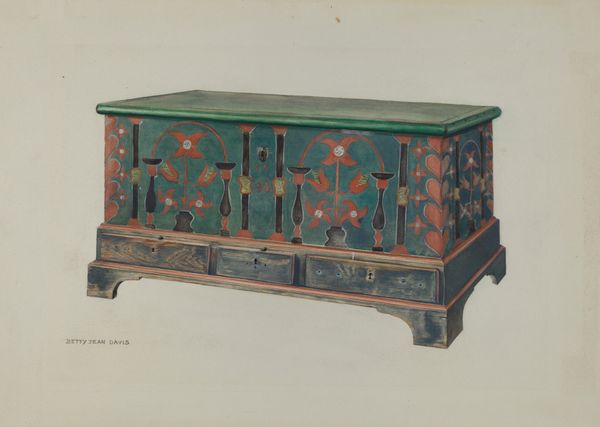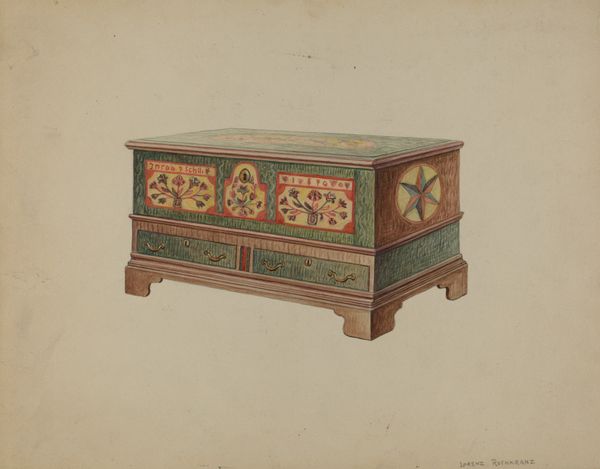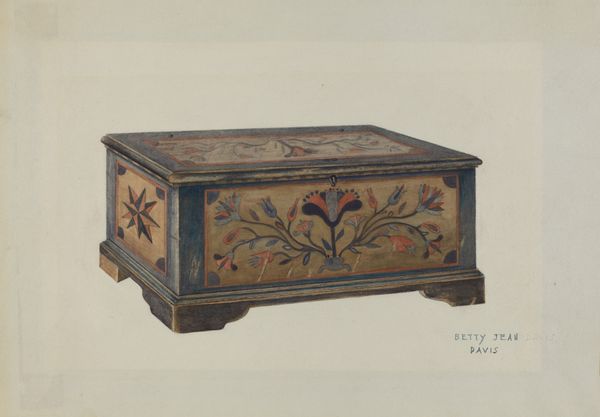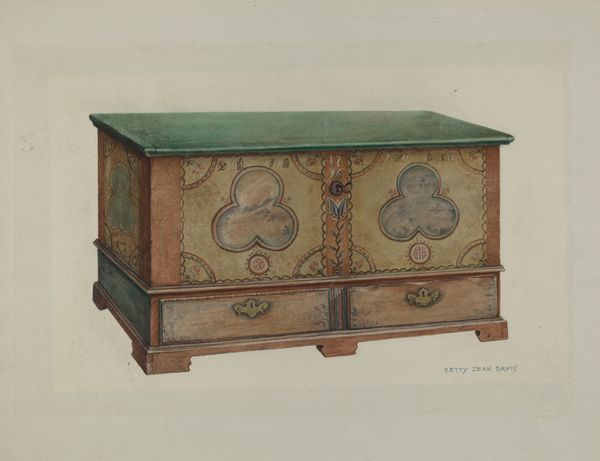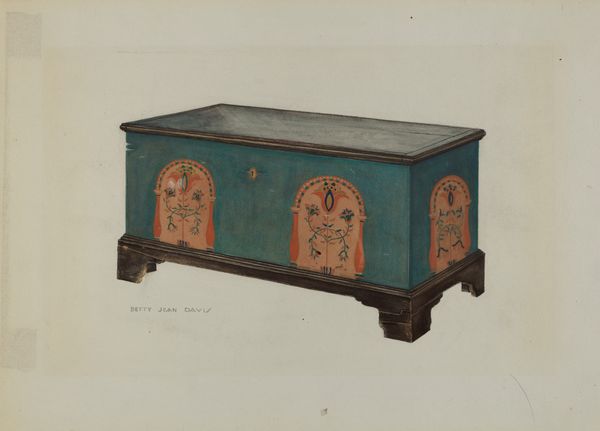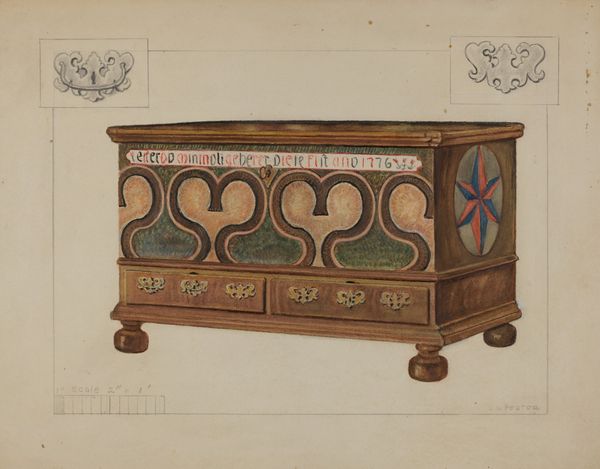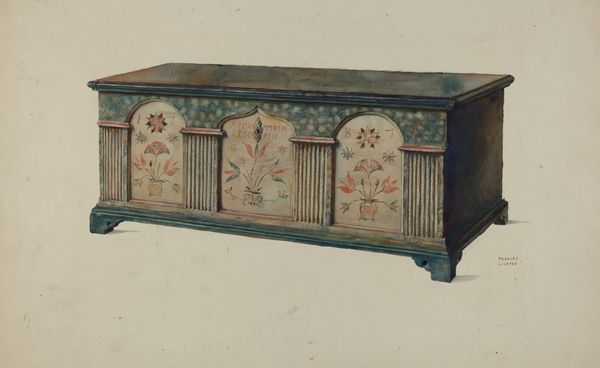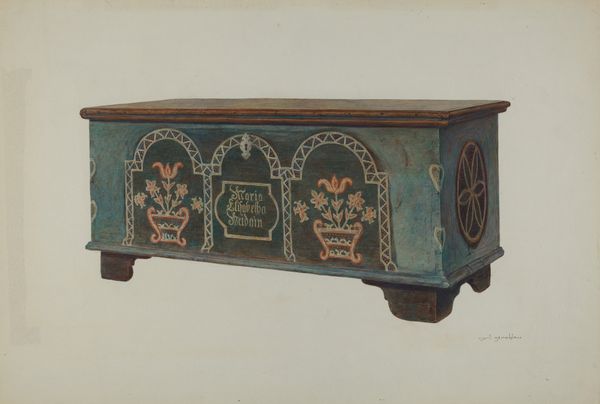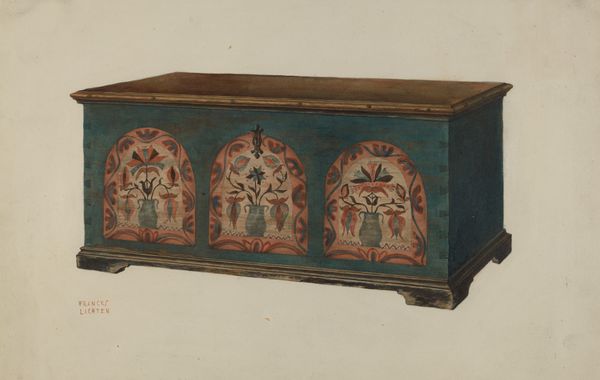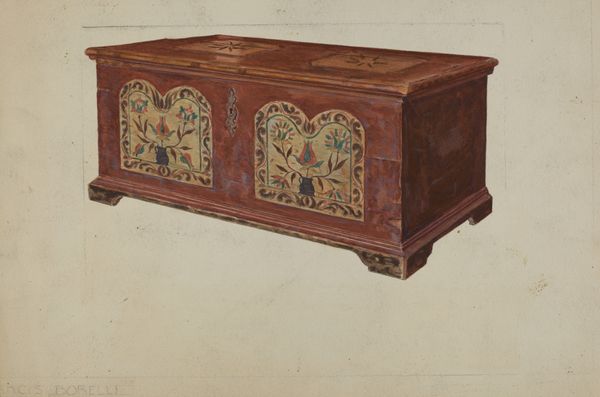
painting, watercolor
#
painting
#
watercolor
#
folk-art
#
watercolor
Dimensions: overall: 34.7 x 48.8 cm (13 11/16 x 19 3/16 in.) Original IAD Object: 28 1/2" high; 52" wide; 22 3/4" deep
Copyright: National Gallery of Art: CC0 1.0
Carl Strehlau’s watercolor of a Pennsylvania German Chest gives us a glimpse into a cultural tradition where utility meets artistry. Painted in the late 19th or early 20th century, this image documents a style of decorative folk art that flourished among German immigrants in Pennsylvania, beginning in the 18th century. These chests weren’t just furniture, they were statements of cultural identity, each adorned with symbols reflecting the maker's heritage and personal story. The vibrant colors and motifs—hearts, tulips, and geometric patterns—speak to a community that valued beauty in everyday life. The chest acted as a canvas for expressing values and beliefs, blending old-world traditions with new-world experiences. These chests often served as marriage chests, holding a young woman's dowry and symbolizing her transition into adulthood. To fully appreciate this piece, we can dig into the archives of local historical societies and genealogical records. Here we can find echoes of the people who crafted and cherished such objects, connecting us to the rich tapestry of American folk art.
Comments
No comments
Be the first to comment and join the conversation on the ultimate creative platform.
